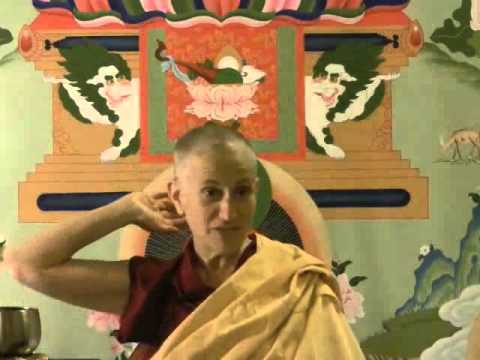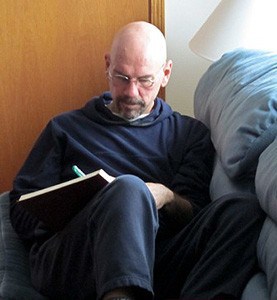The four distortions
Stages of the Path #87: The Four Noble Truths
Part of a series of Bodhisattva’s Breakfast Corner talks on the Stages of the Path (or Lamrim) as described in the Guru Puja text by Panchen Lama I Lobsang Chokyi Gyaltsen.
- Cultivating the desire to be free from samsara
- Four distorted ways we see things
- Replacing habitual ways of thinking
We’re on the verse:
Violently tossed amidst waves of disturbing attitudes and karma,
Plagued by hordes of sea monsters, the three kinds of suffering
We seek your inspiration to develop an intense longing to be free
From this monstrous ocean of boundless and vicious existence.
The purpose of this verse is that we come to see cyclic existence as a “monstrous ocean of boundless and vicious existence,” because when we see it that way then automatically we want to be free of it and we want to attain liberation because nobody likes to stay in a monstrous ocean of boundless and vicious existence. But what I was saying yesterday, if you see it like a pleasure grove, and you don’t see a prison as a prison, and you decorate your cell instead, then there’s going to be no renunciation, no desire for liberation.
How do we train our minds to see cyclic existence for what it is, considering that our mind is so obscured and sees things so inaccurately?
You’re going to say, “What do you mean? I don’t see things inaccurately. I see things spot on.” Well, if that were the case then there would be no way to eliminate suffering. Because if all of our perceptions were accurate and saw things the way they existed objectively then there’s nothing to do. Is there? So we have to have some willingness to see that our perception is incorrect and to see that we don’t need to defend a wrong view, we need to let it go.
Our view is wrong in several ways. Here they talk about the four distortions very often.
-
One is that things that are in fact changing moment to moment we see as permanent.
And you say, “No, I recognize the house changes moment to moment.” But as soon as it falls down we go, “Wait a minute, that wasn’t supposed to happen.” Or we may say, “Oh, yes, everybody’s changing moment by moment.” But then when they die we say, “Huh?” Actually, though we say things are impermanent, our whole way of conceiving and believing them is as if they were really static. That’s why we’re so surprised when things change.
-
And then things that are by nature unsatisfactory we see as satisfactory, we see as wonderful. Like samsara.
-
Things that are foul we see as pure, like our body. I mean, our body’s made of all sorts of ugly stuff, isn’t it? And yet we say, “Oh boy, that person’s so good looking.” You want to touch the inside of their body? So you can see that our perception is rather incorrect.
-
And then things that lack a truly existent self we perceive as having one, and so we think everything has its own essence and exists out there objectively.
These kinds of wrong views perpetuate misperceptions, which make afflictions arise, which make us create karma, which create the undesirable experiences we have.
Here I’m talking about the cause of suffering, the second noble truth. We need to really be on the lookout for these four distortions and see how they operate in our lives, and do some real investigation of them and understand how they are incorrect, and then to replace them with the correct way of apprehending things.
Venerable Thubten Chodron
Venerable Chodron emphasizes the practical application of Buddha’s teachings in our daily lives and is especially skilled at explaining them in ways easily understood and practiced by Westerners. She is well known for her warm, humorous, and lucid teachings. She was ordained as a Buddhist nun in 1977 by Kyabje Ling Rinpoche in Dharamsala, India, and in 1986 she received bhikshuni (full) ordination in Taiwan. Read her full bio.


